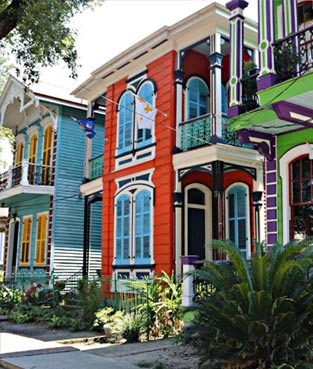Above Ground Tombs in New Orleans
By Doug Keister, author/photographer of "Going Out in Style: The Architecture of Eternity"
The custom of above ground burial in New Orleans is a mixture of folklore and fact. New Orleans is certainly not the only city with a high water table, but it has, at 90%, the largest percentage of above ground burials. New Orleans' first formal cemetery, the St. Peter Street Cemetery, was located in what is now the French Quarter. According to accounts of the time, all deceased were buried in the ground. Accounts of the time also stated that when graves were dug, they frequently filled up with water, resulting in watery graves.
When St. Peter Street graveyard was close to capacity, city officials established St. Louis Cemetery #1. At the time, Esteban Miro was the governor of New Orleans, and his allegiance was to Spain. Therefore, when the St. Louis Cemetery was developed, the wall vault system that was popular in Spain at the time was adopted for those who wished to be buried stylishly above ground. Ground burial also continued at St. Louis Cemetery.
Following a series of nasty epidemics in the early 1830s, which were often blamed on noxious fumes emitted by corpses, the city council passed an ordinance requiring all further burials to take place on land purchased on the Bayou St. John. But an important exemption was made: burials could continue at the existing cemeteries if they were in tombs and vaults in existing above ground structures.
This fortified the tradition of above ground burial for New Orleanians. Even today in Metairie Cemetery, which is on high ground (by New Orleans standards), 90% of burials are above ground. However, in the Jewish section of Metairie Cemetery, most burials are ground burials, in keeping with cultural traditions.



